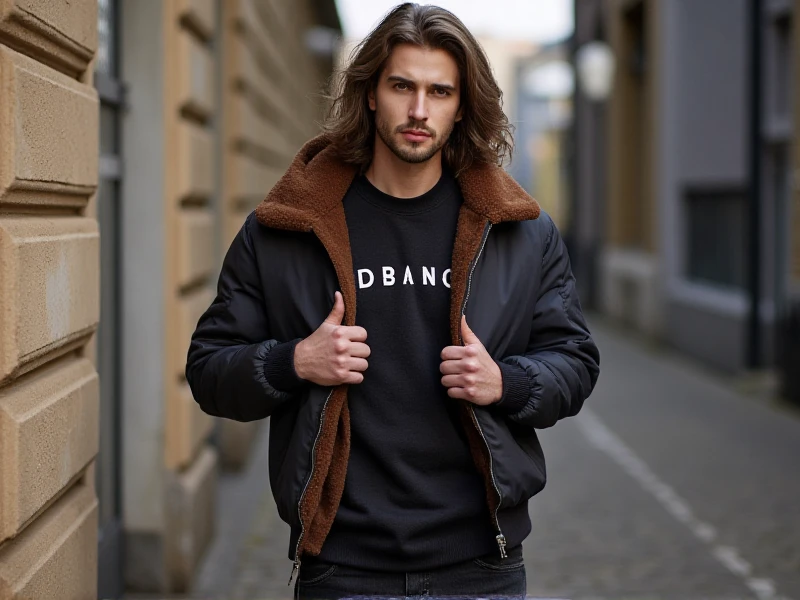The Ultimate Guide to Men's Jackets: Styles, Materials & Buying Tips
2025-06-10

Here's a comprehensive 600-word SEO article focusing on "men's jackets":
Men's jackets are far more than just protection against the elements; they're essential style statements, versatile layering pieces, and crucial components of a functional wardrobe. With countless styles, materials, and features available, choosing the perfect jacket can feel overwhelming. This guide demystifies the world of men's outerwear, helping you find the ideal jacket for every season and occasion.
Why Finding the Right Men's Jacket Matters
A great men's jacket instantly elevates an outfit. It provides structure, adds texture and color, and communicates personal style. Beyond aesthetics, the right jacket offers practical benefits: insulation during winter chills, breathable coverage for spring breezes, waterproof protection from autumn rains, and a lightweight layer for cool summer evenings. Investing in quality men's jackets means investing in comfort, confidence, and long-lasting wear.
Key Styles of Men's Jackets to Master
Understanding different jacket styles is crucial. Here's a breakdown of classics and modern favorites:
1. The Bomber Jacket: Originally flight gear, the bomber is iconic. Characterized by a ribbed collar, hem, and cuffs, and often a zippered front. Ideal for casual looks, bombers work brilliantly with jeans, chinos, and tees. Look for versions in nylon, leather, suede, or cotton.
2. The Denim Jacket (Trucker): A timeless, rugged staple. The classic trucker features a boxy cut, button-front, and multiple pockets. Perfectly complements jeans (try a different wash), cords, or layered over hoodies. Denim jackets age beautifully, gaining unique character.
3. The Field Jacket (M-65 Style): Born from military utility, the field jacket offers durability and pockets galore. Usually made from sturdy cotton or canvas, often water-resistant. Great for casual or smart-casual ensembles, adding a utilitarian edge. Olive green and khaki are quintessential.
4. The Leather Jacket: Synonymous with cool. From sleek bikers to rugged flight jackets, leather offers unmatched texture and develops a rich patina. A high-quality genuine or top-grain leather jacket is a lifelong investment piece for both formal and casual settings.
5. The Parka: The heavyweight champion for extreme cold. Parkas are typically longer, insulated (often with down or synthetic fills), feature a hood (usually fur-trimmed or faux fur for warmth), and are water-resistant or waterproof. Essential for harsh winter climates.
6. The Puffer/Down Jacket: Defined by its quilted sections filled with down or synthetic insulation. Lightweight yet incredibly warm. Modern designs range from ultralight packable versions for active pursuits to more tailored, fashion-forward styles in various lengths.
7. The Peacoat: A smart, tailored classic originating in the navy. Double-breasted with wide lapels, usually made from heavy wool (Melton is common). Perfect for smart-casual and semi-formal winter wear over sweaters or suits.
8. The Rain Jacket (Mac/Trench or Shell): Essential wet-weather gear. Lightweight, fully waterproof shells are best for active use. More formal mac or trench coats offer water resistance, a belted waist, and sophisticated styling for work or dressier occasions. Look for breathable fabrics like Gore-Tex or coated nylon.
9. The Blazer/Sport Coat (Less formal): While traditionally indoor wear, lightweight cotton, linen, or tweed blazers/sport coats function excellently as light jackets in warmer weather or over layers in transition seasons, adding instant polish.
Choosing the Right Material
Material impacts look, feel, function, and longevity:
Leather/Suede: Durable, develops patina, timeless, requires care, less weatherproof (unless treated). Best for style impact.
Denim: Tough, casual, ages well, moderately warm. Great for layering.
Nylon/Polyester (e.g., for Bombers, Rain Shells): Lightweight, windproof, water-resistant (or waterproof), easy care. Ideal for active wear and weather protection.
Wool/Cashmere (e.g., for Peacoats, Topcoats): Naturally insulating, breathable, luxurious feel. Excellent warmth for colder weather. Can be heavy.
Down/Synthetic Fill (e.g., Parkas, Puffers): Outstanding warmth-to-weight ratio. Down is warmer but loses insulation when wet; synthetics perform better damp and dry faster.
Cotton/Cotton Blends (Canvas, Twill): Breathable, comfortable, often more affordable. Good for lighter jackets but absorbs water. Corduroy and moleskin are great colder-weather cotton options.
Tips for Buying the Perfect Men's Jacket
1. Know Your Purpose: Is it for city commuting, hiking, formal events, or weekend errands? Function dictates form.
2. Consider Your Climate: Prioritize warmth, water resistance, or breathability based on your local weather.
3. Focus on Fit: Jackets shouldn't be too tight or overly baggy. Ensure room for a sweater underneath in winter. Armholes should allow movement without excessive pulling. Shoulder seams should sit at the edge of your shoulder.
4. Prioritize Quality Construction: Check stitching (should be even and tight), zippers/buttons (should work smoothly and be sturdy), lining quality (especially important for insulation and durability), and fabric/leather quality.
5. Think Versatility: Can it work with multiple items in your wardrobe? Neutral colors offer maximum versatility.
6. Try Before You Buy (or Check Returns): Fit is paramount. If buying online, understand the size charts and return policy.
The search for the ideal men's jacket might take some time, but understanding the styles, materials, and factors that matter helps immensely. Investing in well-chosen, high-quality men's jackets builds a foundation for a stylish, comfortable, and adaptable wardrobe year-round. Find the pieces that speak to your personal style and meet your practical needs – they'll serve you well for seasons to come.
Category: